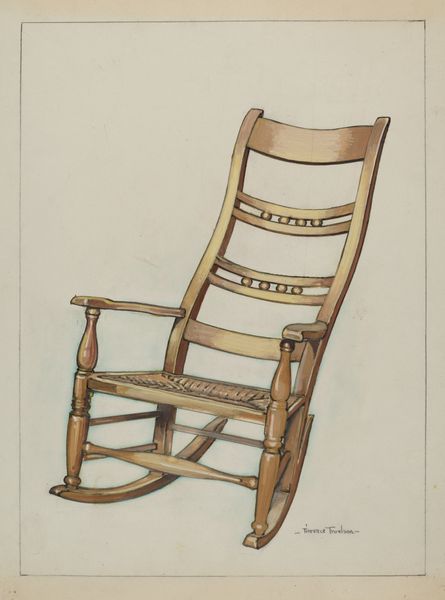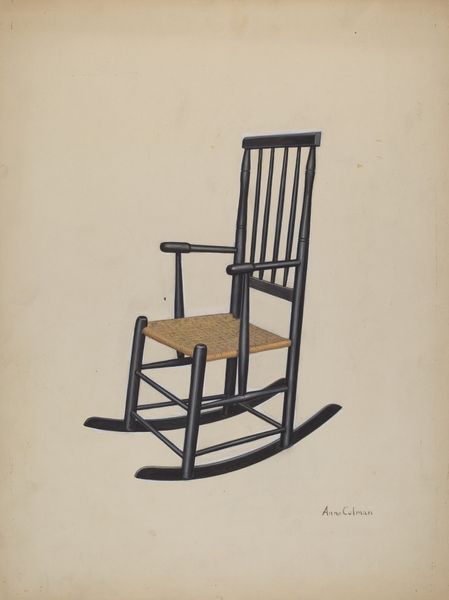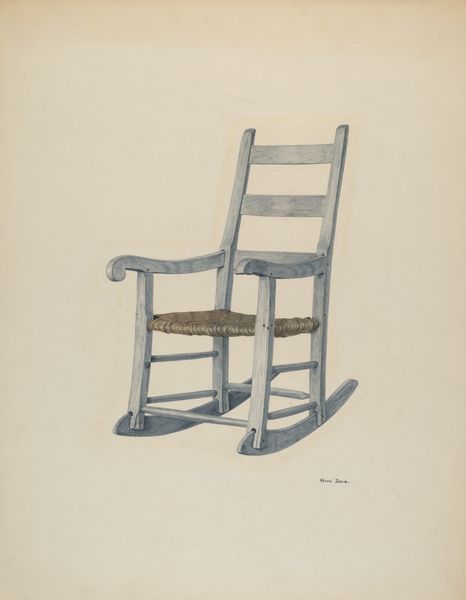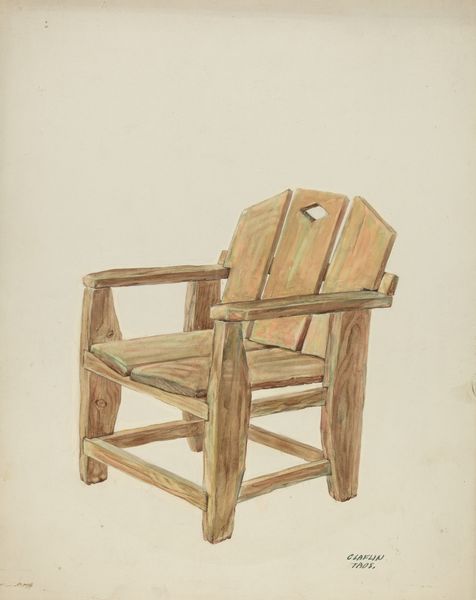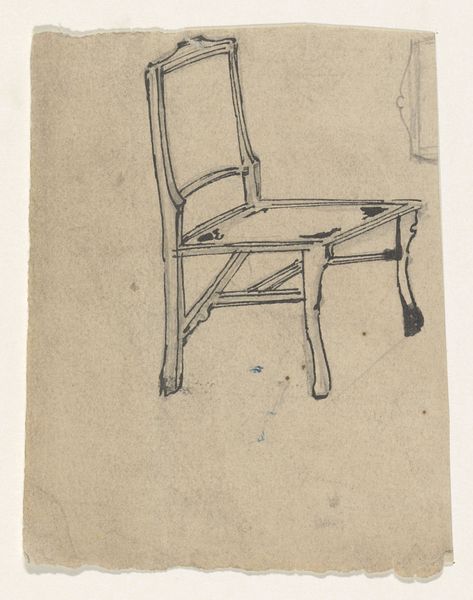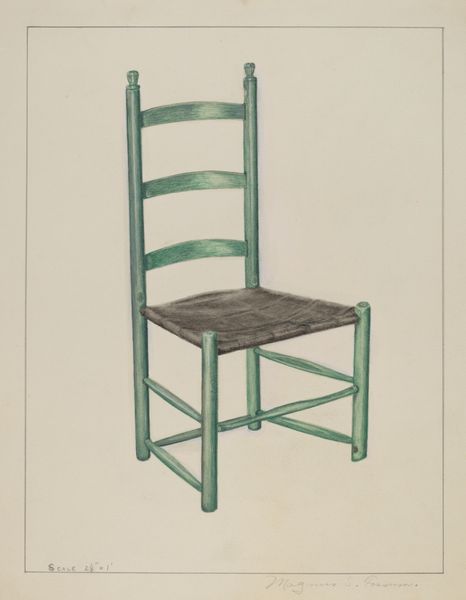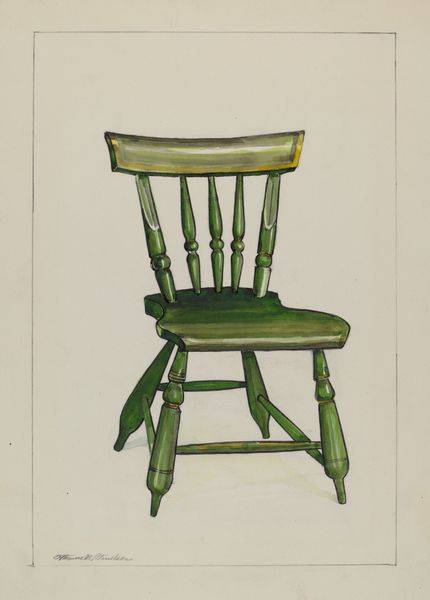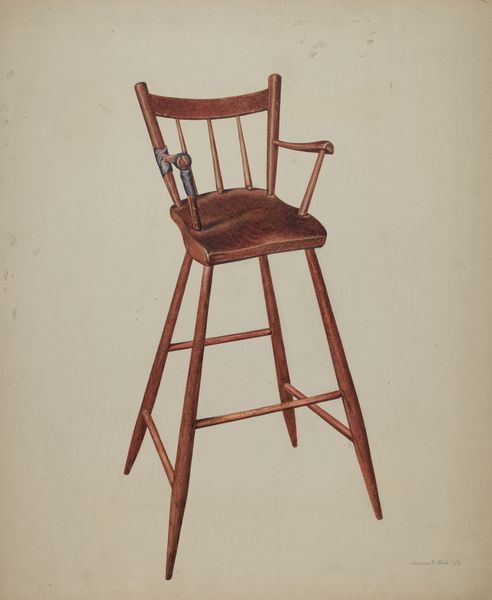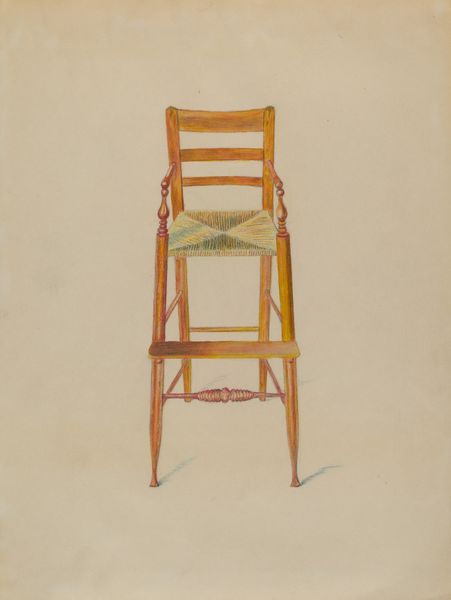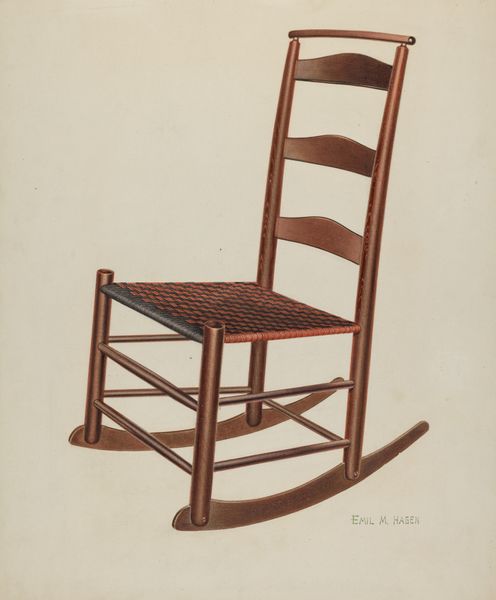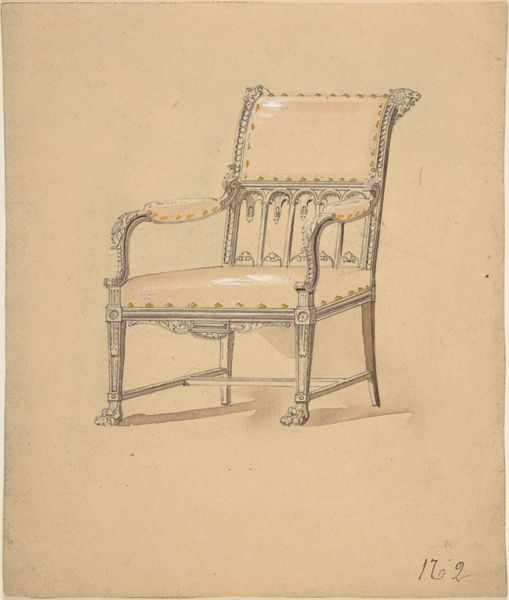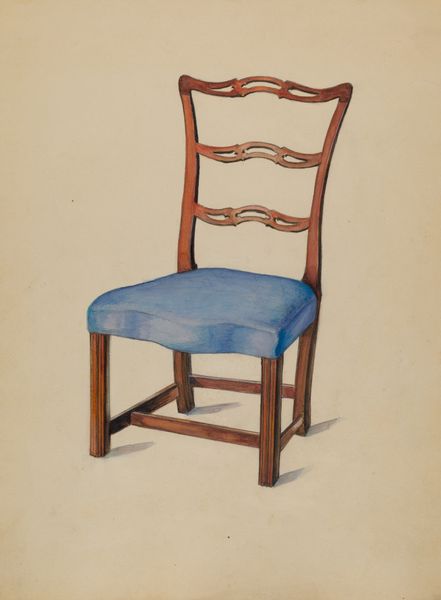
drawing, pencil
#
drawing
#
form
#
pencil
Dimensions: overall: 30.6 x 23.1 cm (12 1/16 x 9 1/8 in.) Original IAD Object: 40 3/4"high; 20 1/2"wide
Copyright: National Gallery of Art: CC0 1.0
Curator: Before us, we have Florence Truelson's "Rocking Chair," a drawing created around 1937, rendered meticulously in pencil. What's your initial impression? Editor: A poignant stillness. The chair's simple form is imbued with the potential for movement, but in this static representation, it feels almost melancholic. I’m curious about the choice of medium; pencil conveys a certain fragility. Curator: Indeed. The rocking chair is such an archetypal image. Its back-and-forth motion inherently suggests the passage of time, memory, reflection. Think of its presence in folklore, particularly where wise elders often hold court, dispensing wisdom and lessons. It's a liminal object, suspended between stasis and kinesis. Editor: Right, a liminal object fashioned, no doubt, from carefully sourced wood—oak, perhaps?—and constructed by hand. There's labor embedded in every line and curve. This was a time when mass-produced furniture was becoming increasingly accessible, yet someone chose to create this by hand. What does this hand-crafting mean for this piece, which seems like an image of something mass-producible? Curator: Possibly a gesture against standardization? Maybe, at a moment in history riddled with industrial expansion and societal disruption, this is a return to simplicity and craftsmanship. A longing for a perceived simpler time, encapsulated within an object associated with domesticity. Consider, also, that the chair appears unoccupied. The drawing speaks to absence. Editor: You make a compelling point. The emptiness does amplify its symbolic power. I’m also intrigued by the artistic decision to focus on a utilitarian object—something so everyday. A drawing like this might be elevated to high art through its rendering. It's quite removed from craft through its medium, right? Curator: Possibly, or perhaps a testament to the quiet beauty present in our quotidian lives. Through Truelson’s hand, the rocking chair transcends its mere function to become an emblem of something deeper – a marker of family, home, and individual contemplation. It makes us see form through time, motion, and function. Editor: It really encourages a thoughtful consideration of the interplay between materiality and symbolism, labor, and absence. Seeing a tool of comfort, caught and framed for posterity, makes us reflect on how human relationships intertwine with designed objects and vice versa.
Comments
No comments
Be the first to comment and join the conversation on the ultimate creative platform.
